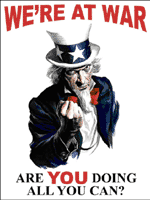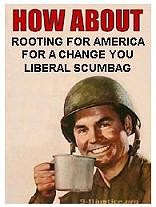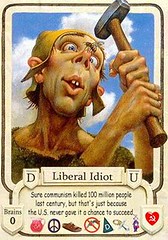As Black as Midnight - A fitting illustration of the bareness of the liberal cupboard of ideas concerning race in America is the discussion of "midnight basketball" as a part of the 1994 Crime Bill. Privately-funded midnight basketball programs have been a fixture in many of America’s urban areas since the mid-1980s, and are typically directed towards young black males between the ages of 12 and 25. Many of the programs incorporate crime prevention and "just say no" messages in addition to the more basic goal of providing teens and young adults a safe alternative to the dangers of ghetto streets after dark.
To supporters, the expenditure of $40 million directed towards midnight basketball programs as a part of the $10 billion in new federal spending as part of the Crime Bill's prevention efforts represented a worthwhile investment. Representative John Conyers (D-MI) explained the rationale behind federal support of midnight basketball programs by saying, "Instead of trying to figure out new ways to punish people who act illegally, we're trying to do something to prevent them from entering into anti-social behavior." During a weekly radio address taped after a June 17, 1994 visit to Chicago's infamous Robert Taylor Homes, Bill Clinton made his case for midnight basketball.Here at the Robert Taylor Homes on Friday, I saw young people wearing tee-shirts for peer groups, for Adopt-A-Grandparent’s program, for antidrug programs, for midnight basketball programs. I met adults working in tenant patrols. All these prevention programs are unleashing the grass-roots energy of responsible residents who understand that they, too, have a duty to try to do something about crime. They're young, they're old, they're middle-aged. They want to take their streets, their neighborhoods, their communities back. And we owe it to them to support them. We can only do it if we keep the prevention component of the Crime Bill.
A primary concern raised in 1994 during Congressional deliberations regarding federal funding for midnight basketball was that it placed a government imprimatur on a program that had the unintended consequence of prolonging adolescent behaviors long past the time when such behaviors are productive. And at the very time when young males should be focused on building their skills and their resumes, midnight basketball provided a false alternative that had the potential to ultimately turn into a dead end. Liberal supporters of midnight basketball could not speak on the opportunity cost for young men to participate in the program. Indeed, how did playing basketball at midnight prepare them to be contributing members of society versus other activities that they must forgo? Could these young men have been studying for a class the next day or participating in the life of their families, or dare we ask (as did former Republican Congressman Martin R. Hoke from the floor of the House of Representatives on August 18, 1994), just simply sleeping?What about this idea of spending Federal money at $40 million for midnight basketball? If you are going to have a basketball game that starts at midnight or at 12:15 or 12:30 and it goes for a couple of hours, you are finished at 2:00, 2:30…What on Earth are we thinking about? Why are people up, and we are talking about youth, I assume, why are people up until 3:00 in the morning and we are spending Federal dollars so that they can be up playing basketball? Should not kids be in bed between 12:00 and 3:00 in the morning?
A secondary problem with funding midnight basketball programs in particular as part of the Crime Bill was not that the programs reinforced unfortunate racial stereotypes regarding black athleticism, but that they reinforced racial stereotypes about black criminality. Support of midnight basketball was and remains part of the liberal tautology that holds that the way to prevent crime is to occupy or distract those whom liberals consider to be potential criminals. (For whatever reason, it is a given that liberals would rather "prevent" criminality than appropriately punish criminals.)
Viewed from this vantage, it becomes clear that for all of his being lauded as the first "black President," Bill Clinton saw young black males, the ostensible targets of this prevention program, as potential criminals worthy of more efforts at deterrence than young black females or youths of any other race. And perhaps certain statistics bore out his opinion, but the fact that he would address the criminal minority among black youth through a program that would have deleterious effects on many of its participants, irrespective of their proclivity towards crime, speaks volumes.
So what happened while young men dribbled and ghettos burned? Two reports cited by a March 20, 2006 New York Times article entitled "Plight Deepens for Black Men, Studies Warn," describe the plight of black men, particularly those between the ages of 20–29. And as the title suggests, the news is not good. Work by Ronald B. Mincy, Columbia University Professor of Social Work and editor of "Black Males Left Behind," along with that of Harry J. Holzer, Peter Edelman and Paul Offner, co-authors of "Reconnecting Disadvantaged Young Men" indicated that in spite of federally sponsored midnight basketball programs and other prevention programs, the overall situation for black men continued to get worse.The share of young black men without jobs has climbed relentlessly, with only a slight pause during the economic peak of the late 1990's. In 2000, 65 percent of black male high school dropouts in their 20's were jobless – that is, unable to find work, not seeking it or incarcerated. By 2004, the share had grown to 72 percent, compared with 34 percent of white and 19 percent of Hispanic dropouts. Even when high school graduates were included, half of black men in their 20’s were jobless in 2004, up from 46 percent in 2000.
According to the Times article, Dr. Mincy commented that, "There's something very different happening with young black men, and it’s something we can no longer ignore," later adding "Over the last two decades, the economy did great, and low skilled women, helped by public policy, latched onto it. But young black men were falling farther back." For his part, Mr. Holzer pointed out two factors contributing to the diminished employment outlook for black males: increased incarcerations and stricter enforcement of child support orders, which according to Mr. Holzer dissuaded noncustodial fathers from obtaining steady work.
Incarceration rates climbed in the 1990's and reached historic highs in the past few years. In 1995, 16 percent of black men in their 20's who did not attend college were in jail or in prison; by 2004, 21 percent were incarcerated. By their mid-30's, 6 in 10 black men who had dropped out of school had spent time in prison.
It is no exaggeration whatever to observe that the weakened state of the African American community is equally reflective of and precipitated by the debased nature of the black "chatteretariat" (i.e.: the glittering confederation of left-wing black preachers, politicians, academics, entertainers/media personalities and other assorted know-nothings who, along with their white counterparts, have sold America a bold-faced fiction as it pertains to matters of race.) As a follow-up to its March 20 article, the Times printed an op-ed by Harvard sociology professor Orlando Patterson on March 26, 2006. In his piece entitled "A Poverty of the Mind," Dr. Patterson elaborates on why the customary explanations for the underperformance of young black males (such as those by Drs. Holzer and Mincy) are inadequate and do not comport with reality.This is all standard explanatory fare. And, as usual, it fails to answer the important questions. Why are young black men doing so poorly in school that they lack basic literacy and math skills? These scholars must know that countless studies by educational experts, going all the way back to the landmark report by James Coleman of Johns Hopkins University in 1966, have found that poor schools, per se, do not explain why after 10 years of education a young man remains illiterate.
Liberals both black and white have yet to explain why they refuse to hold black men to the same standards that are established for men of other races. Young white men were never offered basketball as a diversion from criminal activity. Instead, their families established expectations for their success and their communities provided resources to nurture their development. In contrast, the African American community has allowed much of the nurturing of its children to be "outsourced" to government at all levels through programs as deleterious as welfare and school lunch programs and as seemingly benign as midnight basketball. Unfortunately, the unwavering truth of the matter is that the less personally involved black parents are in the rearing of their children, the less likely they are to adopt middle class behaviors in general, and the less likely they are to achieve their middle class aspirations.
Nor have studies explained why, if someone cannot get a job, he turns to crime and drug abuse. One does not imply the other. Joblessness is rampant in Latin America and India, but the mass of the populations does not turn to crime.
And why do so many young unemployed black men have children – several of them – which they have no resources or intention to support? And why, finally, do they murder each other at nine times the rate of white youths?
As an African American conservative, it is both my sense and my experience that government interventions, particularly those social interventions that are born of a collectivist or statist frame of reference are doomed to failure. It is apparent that midnight basketball did nothing to slow the downward spiral of young black males throughout the 1990s and beyond. In general, liberalism has provided only incomplete explanations and ineffective prescriptions for the problems that afflict black America. This has been borne out repeatedly, especially over the last 50 years. Indeed, whether one examines the effects of expansion of the federal welfare program in the late 1960s, recent liberal attempts at education "reform" or affirmative action, much of liberalism's social agenda has resulted in a worsening of the very situations it was intended to ameliorate.
And through it all, it has been the black community in America that has been in the crucible of liberal experimentation. Our participation as guinea pigs for the Left's trialing has been rewarded only with greater disparities in educational outcomes, family stability, wealth creation and overall quality of life between blacks and whites. It is this experience of being in the Petri dish of liberalism that gives black conservatism its authoritative mandate, as well as its resonance and sense of mission and urgency. In as much as blacks have comprised the investigational arm in each and every liberal experiment, rather than being a drastic response to the black community's plight, African American conservatism is a perfectly reasonable solution to both the dysfunction that plagues black society and the overreaching liberalism that brought it about. In truth, midnight basketball may be the least of liberalism's sins against the African American community. But sadly, it is also the most typical in that it exemplified liberalism's inherent racism.
Monday, June 18, 2007
Subscribe to:
Post Comments (Atom)











.jpg)









No comments:
Post a Comment